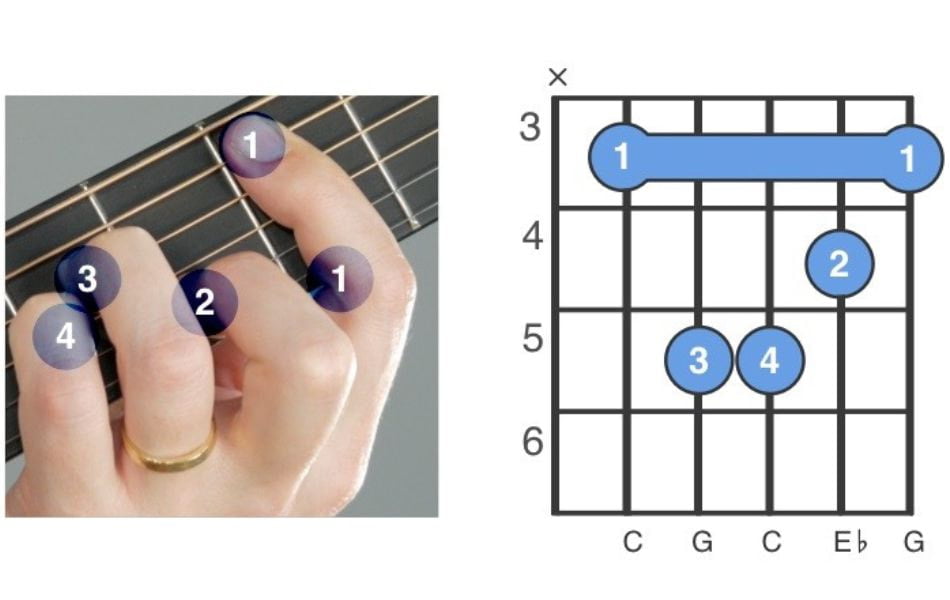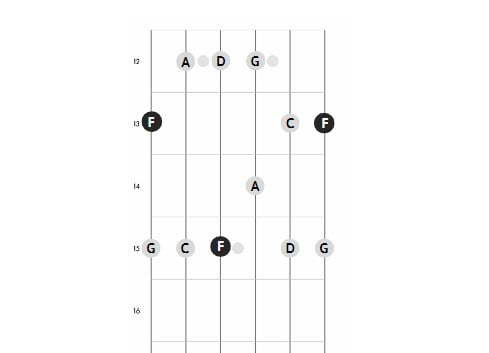The Open C Minor Chord: Tips To Avoid Confusion
Are you a beginner guitarist striving to conquer the elusive Open C Minor Chord? You'll discover the significance of this chord in various musical contexts and learn techniques for mastering it with ease. Get ready to elevate your guitar playing skills and confidently wield the power of the Open C Minor tuning.
Understanding the Open C Minor Chord
The Open C Minor Chord is a fundamental and versatile chord in the guitarist's arsenal. Comprising the notes C, Eb, and G, this minor chord evokes a distinct and melancholic quality that adds depth to musical compositions. This chord is called "open" because it is typically played in an open position, meaning that some strings are played without being fretted.
Chord Structure
Root Note (C): The foundation of the chord, giving it its name.
Minor Third (Eb): The interval that creates the minor quality, distinguishing it from the major chord.
Perfect Fifth (G): The note that provides stability and reinforces the chord's tonality.
Open c tuning chord chart
- Place your ring finger on the 3rd fret of the 5th string (A), the note C.
- Leave the 4th string (D) open.
- Place your index finger on the 1st fret of the 2nd string (B), the note C.
- Leave the 3rd string (G) open.
- Leave the 1st string (high E) open.
Strum from the 5th string (A) down to the 1st string (high E) while avoiding the 6th string (low E).

Distinguishing open C Minor chord and C Major Chord
When looking at the chord diagrams for the Open C Minor and C Major chords, pay attention to the note on the 3rd fret of the 5th string (A). If it's Eb, it's the Open C Minor chord. If it's E, it's the C Major chord.
The C Major chord consists of the notes C, E, and G and it has a bright and happy sound. Whereas, the open c minor tuning consists of the notes C, Eb (E flat), and G it has a sad or melancholic sound.
Some music theory is easy to confuse
C minor chord (Cm)
C minor chord is a concept that is very easy to confuse with open c minor chord those who are new to guitar need to pay special attention. Both use the same symbol as Cm but they have different points.
C minor chord is without specifying a specific position on the guitar. You can use various fingerings at different positions on the fretboard. Whereas, the open C tuning minor chord is a specific way to play the C minor chord in the open position.
Barre Chords
Structure: formed by barring a finger across all or some of the strings at the same fret.
Characteristics: usually played in higher positions on the guitar and can be easily moved to different positions.
Shape: Barre chords have a "bar-like" shape where the index finger actively bars all the strings at the same fret.
Advantages: allow playing multiple chords in one position, making music playing quicker and more convenient.

Cm7 chord
Structure: Cm7 chord is a C minor chord with the addition of the seventh note (Bb).
Components: It consists of the notes C, Eb, G, and Bb.
Chord Type: It is referred to as "C minor 7" due to the presence of the seventh note (Bb), which adds expressive and jazzy characteristics to the chord.
Usage: Cm7 chord is commonly used in jazz, blues, and various other genres to create a rich and expressive musical atmosphere.
In conclusion, mastering the Open C Minor chord is a valuable skill for any guitarist seeking to explore a variety of musical styles and emotions. This article helps you better understand the information as well as avoid confusion in the process of learning guitar. Don't forget to download the Guitar Tunio app to accompany you on the musical journey ahead.








